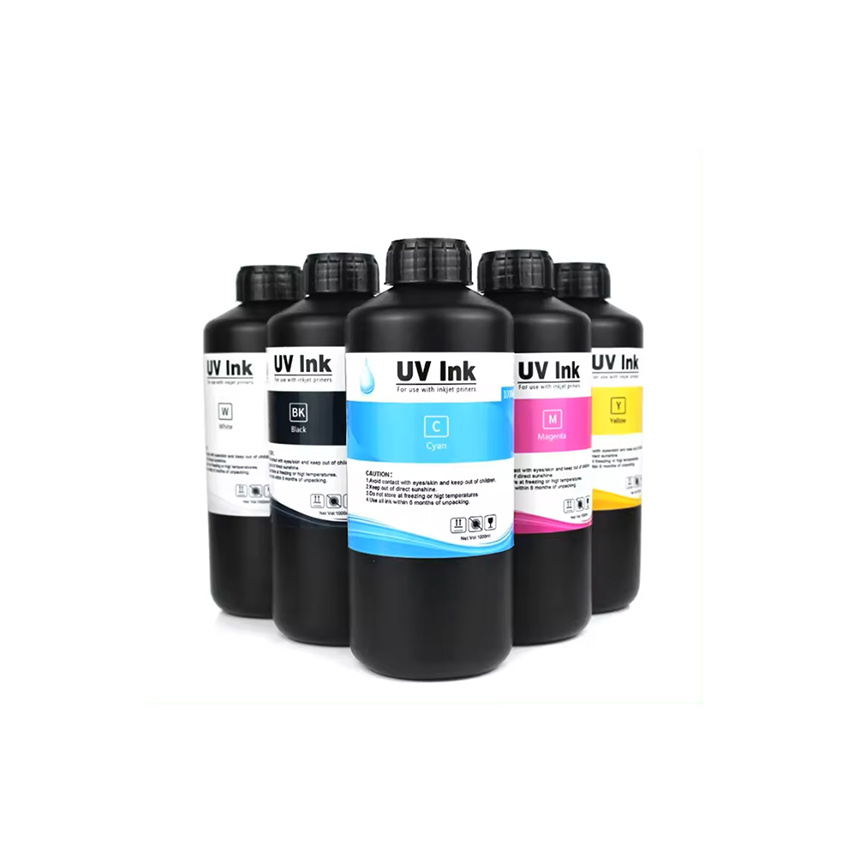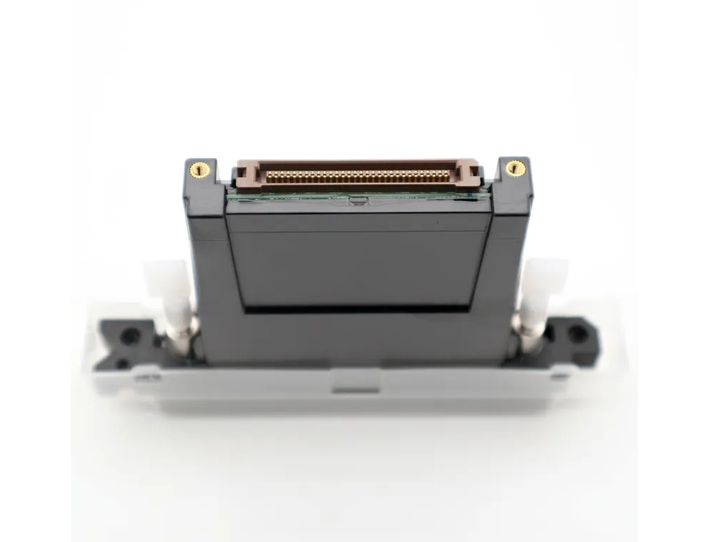How to Properly Store UV Ink for Optimal Performance
How to Properly Store UV Ink for Optimal Performance
Introduction:
UV ink, also known as UV curable ink, is a type of ink that cures under ultraviolet (UV) light, offering numerous benefits such as quick drying times and high-quality print results . However, to maintain its effectiveness and ensure the longevity of the ink, proper storage is crucial. This article will guide you through the essential steps and best practices for storing UV ink to keep it in optimal condition .
1. Storage Environment:
The storage environment plays a significant role in preserving the quality of UV ink. The ideal temperature range for storing UV ink is between 18-25°C, with a relative humidity of 55%-65% . Fluctuations in temperature and humidity can affect the ink's viscosity and reactivity . It's also important to keep the storage area clean and dust-free to prevent contamination .
2. Avoid Direct Sunlight and UV Exposure:
UV ink should be stored in a dark place, away from direct sunlight or any strong UV light sources. The ink's bottles should be made of black, non-transparent material to prevent any UV rays from causing the ink to cure prematurely . This is crucial as exposure to UV light can lead to the ink solidifying and becoming unusable .
3. Sealed and Tightly Closed Containers:
Always ensure that the UV ink containers are tightly sealed and closed when not in use. This prevents the ink from drying out or coming into contact with airborne contaminants . The containers should also be made of non-breakable material to avoid accidental breakage and ink waste .
4. Keep away from sources of fire and heat:
To prevent any accidents, store UV ink away from any sources of heat or open flames . The heat can not only cause the ink to cure but also potentially lead to fire hazards.
5. Temperature Control:
Maintain a consistent temperature in the storage area. Sudden changes in temperature can affect the ink's performance. If there is a significant temperature difference between the storage area and the printing environment, allow the ink to acclimate to the printing environment before use .
6. First-In, First-Out Principle:
Follow the "first-in, first-out" principle when managing your UV ink inventory. This means using the oldest ink stocks first to prevent the ink from expiring and ensure that you are always using the freshest product .
7. Rotation and Expiry:
Be aware of the expiration dates of your UV ink. Unopened UV ink typically has a shelf life of about one year . Once opened, it's best to use the ink as soon as possible to maintain its quality and performance .
8. Proper Handling and Disposal:
When handling UV ink, use appropriate personal protective equipment (PPE) to avoid skin contact or eye exposure. In case of accidental contact, immediately rinse with water and seek medical attention if necessary . Dispose of used ink containers responsibly and in accordance with local regulations .
Proper storage of UV ink is vital for the efficiency and quality of your printing operations. By following these guidelines, you can ensure that your UV ink remains stable, effective, and ready for use, leading to consistent and high-quality print results . Always refer to the manufacturer's recommendations for specific storage instructions tailored to your UV ink brand and type.

Introduction:
UV ink, also known as UV curable ink, is a type of ink that cures under ultraviolet (UV) light, offering numerous benefits such as quick drying times and high-quality print results . However, to maintain its effectiveness and ensure the longevity of the ink, proper storage is crucial. This article will guide you through the essential steps and best practices for storing UV ink to keep it in optimal condition .
1. Storage Environment:
The storage environment plays a significant role in preserving the quality of UV ink. The ideal temperature range for storing UV ink is between 18-25°C, with a relative humidity of 55%-65% . Fluctuations in temperature and humidity can affect the ink's viscosity and reactivity . It's also important to keep the storage area clean and dust-free to prevent contamination .
2. Avoid Direct Sunlight and UV Exposure:
UV ink should be stored in a dark place, away from direct sunlight or any strong UV light sources. The ink's bottles should be made of black, non-transparent material to prevent any UV rays from causing the ink to cure prematurely . This is crucial as exposure to UV light can lead to the ink solidifying and becoming unusable .
3. Sealed and Tightly Closed Containers:
Always ensure that the UV ink containers are tightly sealed and closed when not in use. This prevents the ink from drying out or coming into contact with airborne contaminants . The containers should also be made of non-breakable material to avoid accidental breakage and ink waste .
4. Keep away from sources of fire and heat:
To prevent any accidents, store UV ink away from any sources of heat or open flames . The heat can not only cause the ink to cure but also potentially lead to fire hazards.
5. Temperature Control:
Maintain a consistent temperature in the storage area. Sudden changes in temperature can affect the ink's performance. If there is a significant temperature difference between the storage area and the printing environment, allow the ink to acclimate to the printing environment before use .
6. First-In, First-Out Principle:
Follow the "first-in, first-out" principle when managing your UV ink inventory. This means using the oldest ink stocks first to prevent the ink from expiring and ensure that you are always using the freshest product .
7. Rotation and Expiry:
Be aware of the expiration dates of your UV ink. Unopened UV ink typically has a shelf life of about one year . Once opened, it's best to use the ink as soon as possible to maintain its quality and performance .
8. Proper Handling and Disposal:
When handling UV ink, use appropriate personal protective equipment (PPE) to avoid skin contact or eye exposure. In case of accidental contact, immediately rinse with water and seek medical attention if necessary . Dispose of used ink containers responsibly and in accordance with local regulations .
Proper storage of UV ink is vital for the efficiency and quality of your printing operations. By following these guidelines, you can ensure that your UV ink remains stable, effective, and ready for use, leading to consistent and high-quality print results . Always refer to the manufacturer's recommendations for specific storage instructions tailored to your UV ink brand and type.

RECENT POSTS
Application
-
 UV DTF Printer Client FeedbackA customer from Austria placed an order for our UV DTF printer after many inspections. This is their feedback after using it.
UV DTF Printer Client FeedbackA customer from Austria placed an order for our UV DTF printer after many inspections. This is their feedback after using it. -
 DTF Printer Effect ShowDirect to film printer(DTF printers) are T-shirt transfer printers,Hstar DTF printer offer a transfer solution especially for dark color fabric,which is a creative application process.
DTF Printer Effect ShowDirect to film printer(DTF printers) are T-shirt transfer printers,Hstar DTF printer offer a transfer solution especially for dark color fabric,which is a creative application process.
More Application












